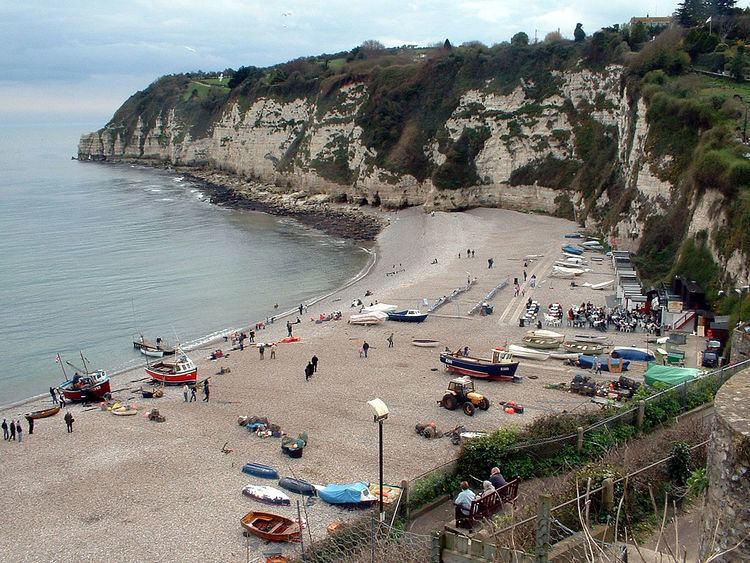Population 1,317 (2011) Civil parish Beer Area 6.7 km² Local time Wednesday 8:44 PM | OS grid reference SY2289 Sovereign state United Kingdom Dialling code 01297 UK parliament constituency Tiverton and Honiton | |
 | ||
Weather 7°C, Wind W at 34 km/h, 80% Humidity | ||
059 vanlife the historic fishing village of beer devon
Beer is a village and civil parish in the East Devon district of Devon, England. The village faces Lyme Bay and is a little over one mile west of the town of Seaton. At the 2011 Census, the parish had a population of 1,317.
Contents
- 059 vanlife the historic fishing village of beer devon
- Map of Beer UK
- Location
- The village
- Notable people
- References
Map of Beer, UK
Location
The village is situated on the 95-mile long Jurassic Coast, England's first natural World Heritage Site. Its picturesque cliffs, including Beer Head, form part of the South West Coast Path.
The village
Beer is mentioned in the Domesday Book of 1086, at which time it was located within Colyton hundred and had 28 households. Its name is not derived from the drink, but from the Old English word bearu, meaning "grove" and referring to the original forestation that surrounded the village.
It is a pretty coastal village that grew up around a smugglers' cove and caves which were once used to store contraband goods. These are now part of the attraction of the village. Many of the buildings are faced with flint, a hard glassy stone found in the local chalk rock.
Historically, the main sources of income for the village include fishing and lace production. Boats are winched up the beach as there is no harbour, and fresh fish is sold nearby. Nowadays small electrically driven winches using steel cables or tractors are located on the beach to haul boats in. Higher up is an old manual capstan operated by up to 20 men, now disused.
A brook winds its way in an open conduit alongside the main road down to the sea.
A WW2 pillbox is located close to the western side of the beach exit.
The shape of the coastline allowed local seafarers to operate in weather conditions when other towns could not, because it is protected from the prevailing westerly winds by Beer Head and the chalk cliffs which are the furthest outcrop of limestone on the southwest coast.
Nowadays, the sources of income are mainly tourism and fishing. Beer is also the home of the Pecorama (run by the Peco model railway manufacturer), which includes pleasure gardens and the Beer Heights Light Railway.
Beer has a steep pebble beach. This makes walking on the beach difficult. Long rubber mats — actually recycled conveyor belts — are laid down to assist walkers.
Beer is home to a cave complex, the Beer Quarry Caves, resulting from the quarrying of Beer stone. This stone has been prized since Roman times, because of its workability for carving and for its gentle yellow colour on exposure to air. Beer stone was used in the construction of 24 cathedrals around the UK, including Exeter Cathedral, Westminster Abbey and St. Paul's Cathedral, and was also used in the building of Christchurch Cathedral, St.Louis. Missouri, USA. Bovey House, an Elizabethan manor house, is a mile inland.
Starre House, the oldest house in Beer is built using the local Beer stone that has been quarried since Roman times.
Bacteria taken from cliffs at Beer on the south coast were launched to the International Space Station in 2008. The Beer microbes were placed on the European Space Agency's (ESA) Technology Exposure Facility and were sent up still sitting on, and in, small chunks of cliff rock from the Jurassic Coast. After 553-days they found that many were still alive. The survivors are now reproducing in a laboratory. This was part of an experiment to study the survival of microbes (which naturally live on the stone) in extreme conditions. A new species of cyanobacteria was isolated at the Open University that could be used in future space settlements on the Moon and Mars to produce oxygen and break down rocks.
